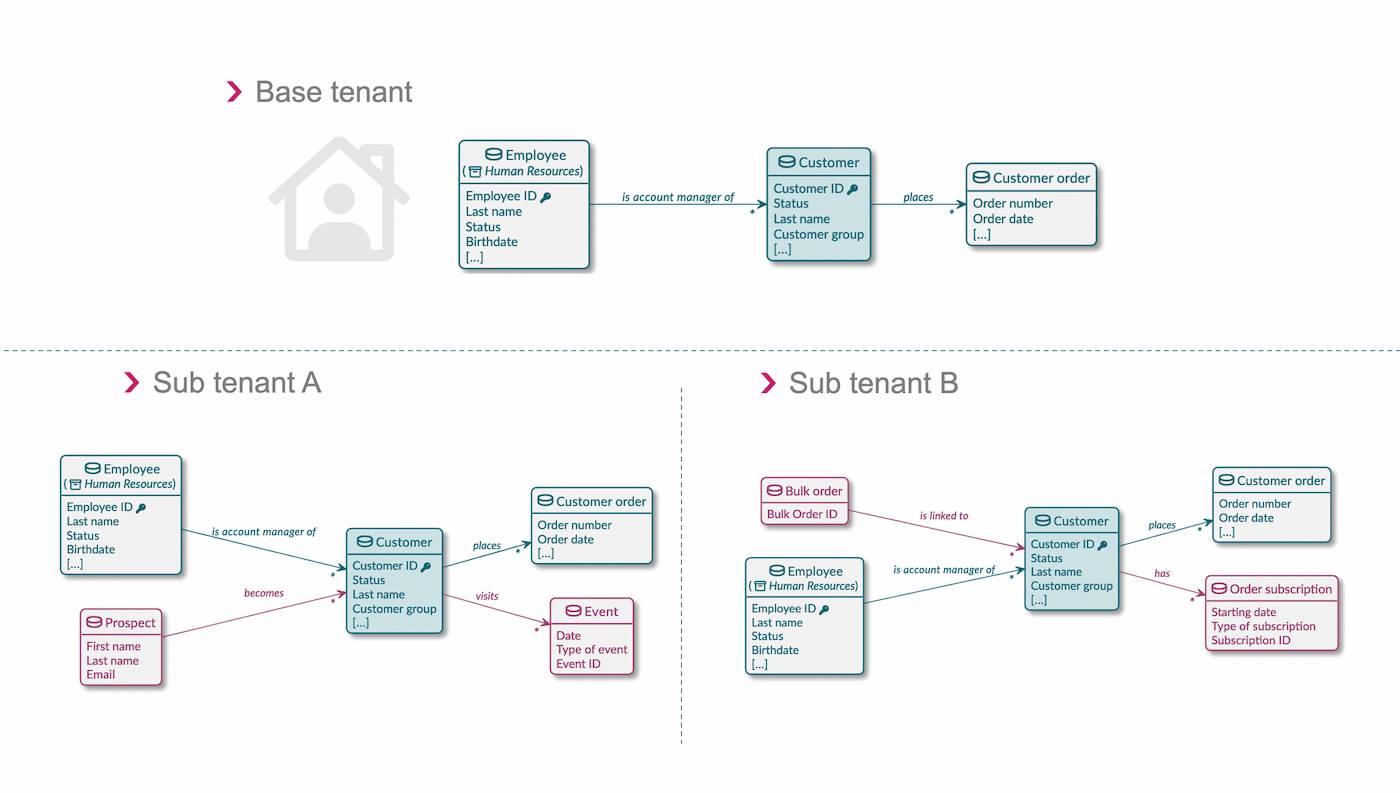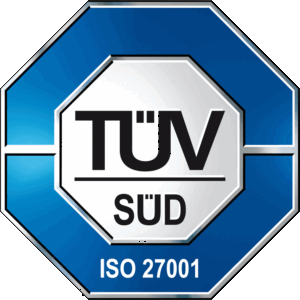With Release 3.2, individual tenants in dataspot. can now be assigned a base client and thus become its subtenants.
With this assignment, metadata elements of the base client are displayed in each individual assigned tenant (subtenant) and can thus be used as if they were their own assets.
This means that all assets (business objects, attributes, key figures, data usages, systems, etc.) in the individual subtenants can now be supplemented with additional, custom metadata elements and enriched with individual information.
The assets of the base tenant can - within the framework of a common governance - only be changed in the base tenant.

If IT projects are be approached differently than they were 30 years ago, it is indispensable for companies that operate in a network or a corporate structure to develop and establish a business data model as a joint common basis.
At group level the harmonized data model is managed in the base tenant and is predefined for all local national companies, dependencies, etc. Group subsidiaries can manage their individual views in the sub-tenant and map them to the group overall view. Group subsidiaries can manage their individual views in the subtenant and map them to the overall group view. In this way, it is possible to develop an overall harmonized view without overriding the individual reality of individual tentants.
Our credo is: "Everyone has a right to metadata". Nevertheless, there are business functions where access, even with metadata, must be restricted. These are generally either sensitive data definitions that require special protection from a GDPR perspective, or even critical infrastructure information. For fear of industrial espionage, this could also include research and development data. These data domains - HR, R&D, etc. - can be simply managed in a subtenant that is only visible for a selected group of users.
IT providers who service different companies with shared IT systems also benefit greatly from cross-tenant metadata management. This is not least because the elements common to all tenants can be managed centrally in a base client, thus conserving resources for all companies served. Common applications and models (including data lineage and data quality management) for these companies are managed in the base client, while individual applications and models are managed in the respective subclients.
When modeling a new data domain or extending an existing data model, it might be nessessary to refer to the already established data model in order to be able to refer to it. Modelling such additions in a separate subclient, with reference to the already established model (base client), makes it possible to do so without affecting existing structures. Once modeling is complete, the "prototype" can simply be transferred from the subclient to the base client and can thus be made productive.
Our new release also includes the JdbcMetadataConnector, which allows easy synching with metadata from databases
dataspot. is an innovative company based in Vienna, Linz, Basel, Zurich and Berlin, which has set itself the goal of enabling its customers to recognize the value of their data from a professional perspective.
